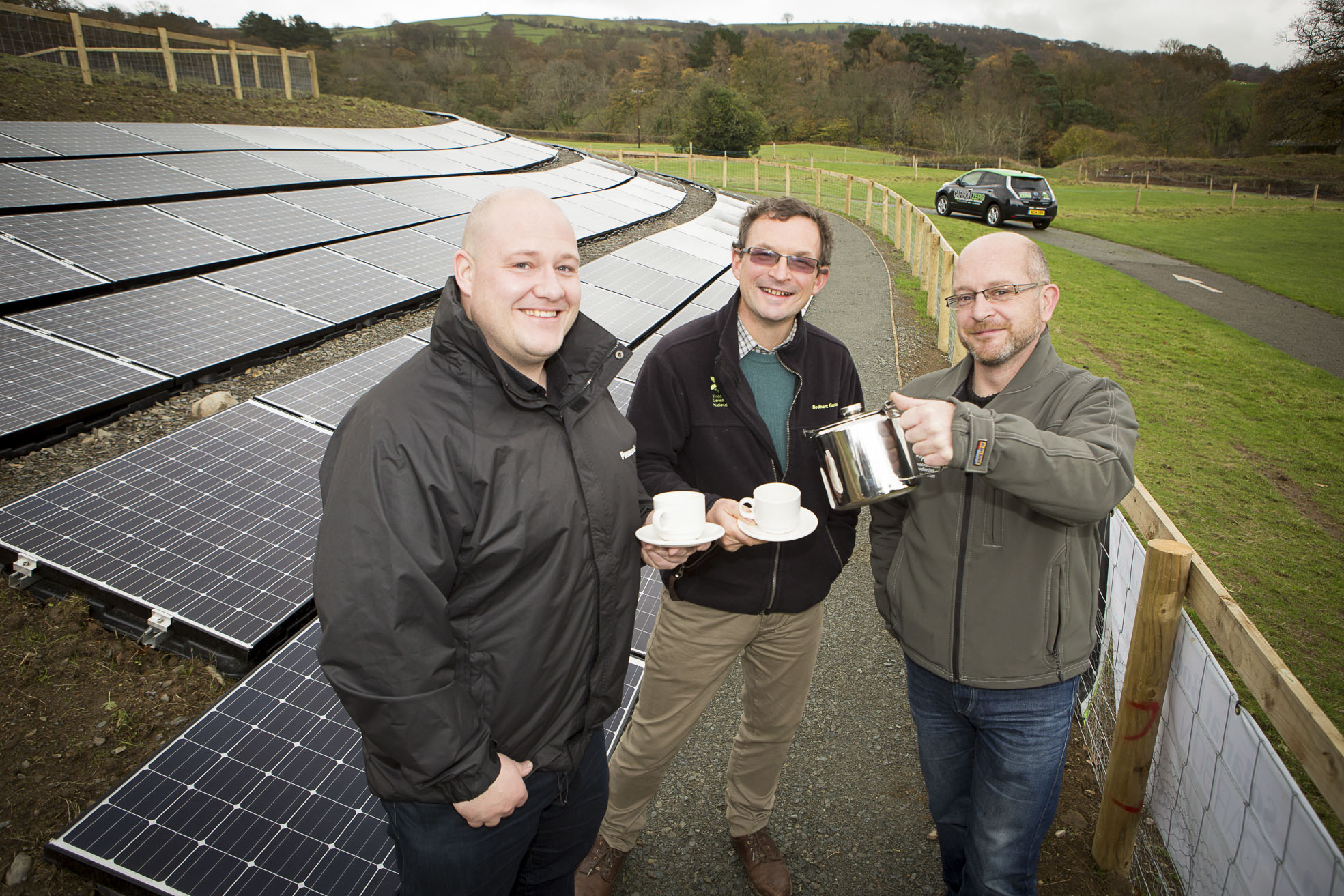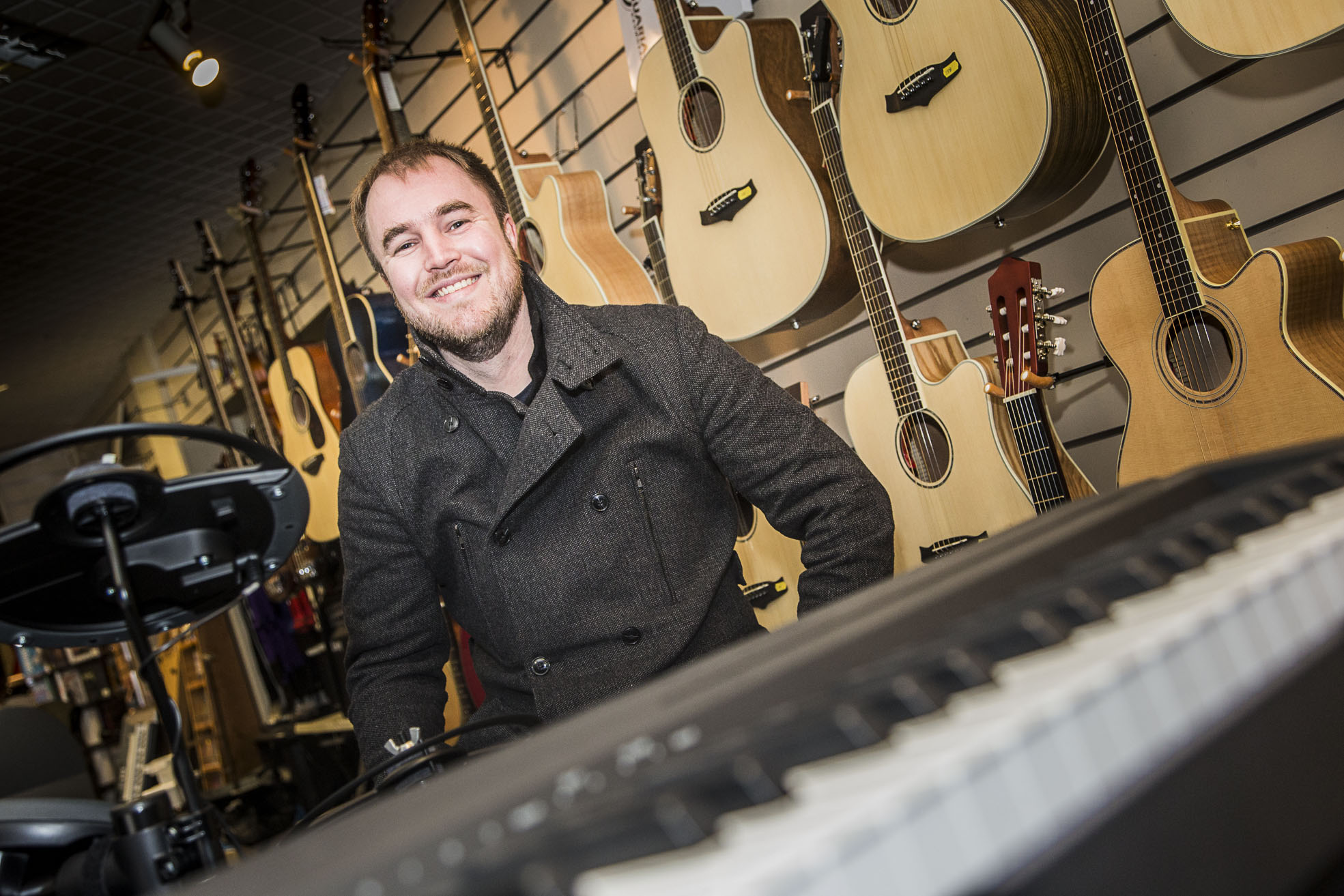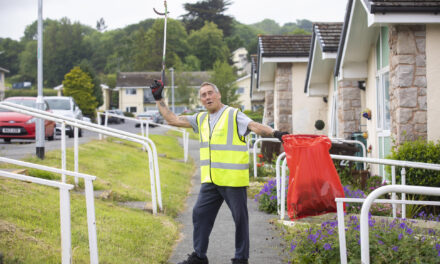Visitors to one of the UK’s most popular gardens can now enjoy a solar-powered cuppa.
An array of 175 solar panels is now providing energy for the Pavilion café at the internationally-renowned Bodnant Garden in the Conwy Valley.
The state-of-the-art panels, which have been installed on a rocky hillside above the overflow car park, also provide power for two car charging points and recharging the batteries of power tools like leaf blowers.
The work has been carried out for the National Trust by solar energy specialists Carbon Zero.
The Panasonic system was supplied as part of a new corporate partnership agreement with the technology company and will generate 43,000 kilo watt hours a year.
The initiative is part of the National Trust’s drive to reduce their overall energy use by 20 per cent by 2020 and to use renewable technologies to reduce the Trust’s use of carbon based fuels by at least 50 per cent.
Carbon Zero boss Gareth Jones was thrilled to have been awarded the contract, particularly as the civil engineering side of the work was done by the family business Mini Muckshift, which is run by his father Tom.
Gareth said: “It’s a unique system because we’ve incorporated the panels on a curve into the hillside and it’s now sending power back down to the café via a 350m long 95mm cable.
“Bodnant Garden is open pretty much all year round now and its footfall has increased massively this year.
“Their peak time is obviously in the summer which is when the solar system obviously works best – so when they’ve got increased demand on the supply obviously the solar system will provide lots of free electricity.
“This is a prestigious project for us and we were delighted to be chosen by the National Trust who are very knowledgeable about this industry.
“We’re an approved installer for Panasonic and these are their latest technology panels and the feedback we’ve had from the National Trust is that it’s the best system they have out of all their portfolio.
“The project was quite technologically challenging from a civil engineering point of view, so that draws on my experience as a civil engineer and the family business with civil engineering and groundwork capabilities.
“We’ve brought all of these skills together to deliver the project on time and on budget.
“It involved installing a very large cable down the hillside and back into the café.
“The cafe never closed at all while we did the work, so we’ve had to work round people, and ensuring the safety of the public whilst we were working.
Paul Southall, environmental advisor for the National Trust, said: “Every National Trust property has its own unique spirit, and we’ve got to make sure that whatever we install is appropriate in the right place.
“Bodnant Garden has had 212,000 visitors this year and when the sun is shining our visitors are here so this system makes a perfect match.
“In the first morning it was operational it roughly translated into a saving of about £35 or £40 of energy we didn’t have to buy from the national grid. It allows us to put the money we save into conservation which is our core purpose.
“For me personally, this is the nicest installation we have. Aesthetically it sits within the landscape rather than big frames two metres high in the air. It’s a great example of what can be achieved.”
It was a sentiment echoed by William Greenwood, the general manager at Bodnant Garden, who was pleased with the quality of the work by Carbon Zero and Mini Muckshift.
He said: “I was slightly worried that it was going to look like an industrial, unsightly blot on the landscape but it’s fantastic. It blends in beautifully. It looks as though it’s always been there and always should have been there.
“Some people have even commented to me that it does look like a piece of modern art because of the way it serpents round the hillside in sinuous line and follows the curves.
“As well as reducing our energy bills, it shows we are trying newer and different ways of being sustainable in the way we run a garden.
“We’ve bought a lot of rechargeable electric power tools now and we’ve got electric vehicles and essentially they’re going to be running off the electricity we’re producing ourselves.
“This is about the art of the possible. If we can do it here, people can do it anywhere.”










